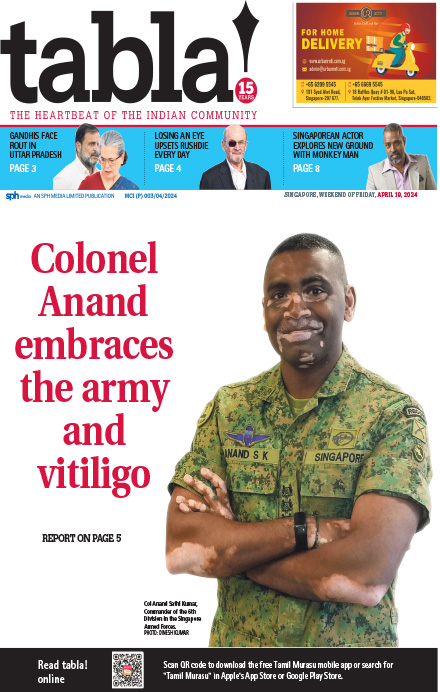ASAD LATIF
News that the vaccinated travel lane (VTL) between Singapore and India will begin on Nov 29 comes as a slightly belated Deepavali gift.
There will be six designated daily flights from Chennai, Delhi and Mumbai following the Civil Aviation Authority of Singapore's agreement with India's Ministry of Civil Aviation on the resumption of scheduled commercial passenger flights between the two countries.
The VTL with India makes eminent economic sense as the world comes to terms with treating the coronavirus pandemic as an endemic disease.
According to the website of the Indian High Commission, about 9,000 Indian companies are registered in Singapore, while more than 440 companies from Singapore are registered in India.
It must mean something that Singapore has the highest concentration of Indian Institute of Technology (IIT) and Indian Institute of Management (IIM) alumni in any city outside India.
Given how highly the IIT and the IIM are regarded both in India and outside it, it says a lot that a sizeable number of their graduates have chosen to make Singapore home.
The attractions of Silicon Valley, New York, London, Frankfurt, Hong Kong, Shanghai and Sydney notwithstanding, talented Indians choose to come here. Many stay on to become permanent residents and some become citizens.
The VTL pays tribute to their choice by easing travel and cementing family and social connections between the two countries. Culture is coming to the forefront again.
Singapore attracts Indians culturally because it combines some of the verities of the East and the West. If anything, Singapore is the West in the East.
As a globalised island city-state, it displays a degree of economic efficiency in the allocation of resources and the expected returns from them that reflects best practices in the West (when those practices are not overwhelmed by the kind of protectionist populism witnessed in America recently).
At the same time, however, Singapore is situated culturally in Asia, of which India is an inextricable past. Time-tested traditions, everyday norms, instinctive forms of social recognition and natural patterns of behaviour are common to both the city-state and the giant civilisational nation.
Arriving Indians do not need to adjust their sense of themselves to stay in this country.
This is not only because of Indians settled here already but because the multiculturalism of Singapore is an extension of the cultural comfort that the best Indians enjoy and display within India.
For all the varieties of caste, creed, language, region and politics that characterise India, that country holds together because its grassroots experience of felt unity over time exceeds its present confrontation with manufactured difference.
Singapore, too, is distinguished by its cosmopolitan ethnicity. Indians here occupy common existential space with Chinese, Malays and Eurasians.
Every generation of Indians which decides to lay down roots here joins in a relay race whose origins are less important than its destination.
India's cultural relations with Singapore are not a diplomatic nicety. They attest to the tangibility of ties that have developed over the ages between two sovereign nations both seeking to come to terms with the globalisation of modernity.
Covidean interlude Covid-19 is a primitive curse on the modernity of global relations. Like the pandemics that have preceded it, Covid creates walls of epidemiological distrust between neighbouring homes, villages, towns, cities and nations. Naturally, it has disrupted ties between India and Singapore.
However, that very rupture reveals how close India is to Singapore. From migrant workers and professionals to families divided by the closing of borders, Covid affected humans in a way that statistics and economic figures cannot capture.
But for free phone and video calls, the pain would have been greater. Still, even technology could not bridge the suspension of face-to-face relations.
No phone or computer can replace the joy of touching the feet of parents as they walk into the arrival hall of Changi Airport. Embracing an elder sister or brother or lifting a niece or nephew off the ground into kiss-enfolded arms proves that blood is thicker than water.
And, of course, meeting a spouse and one's own children after months of suffocating separation lights up the very being.
Now, such meetings should become common without the need for quarantine. It is difficult to envisage the emotional scale and intimate meaning of this return to familial and social normalcy.
Unfortunately, Covid is becoming an endemic disease. There is no knowing how it will mutate and what border and social distancing measures will be needed to contain its spread within and between nations.
But the VTL is a concrete step of confidence in the way India and Singapore are handling the disease, particularly the Delta variant that has created so much loss and pain. Clearly, both nations must keep up their guard.
This means that we as individuals owe it to ourselves to take precautions so that the opening of air borders can continue. The VTL is the best piece of news in Singapore-India relations in many months. It should stay that way.
Asad Latif is an editorial writer for The Straits Times.



